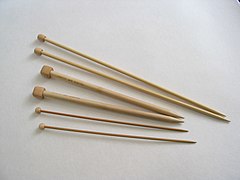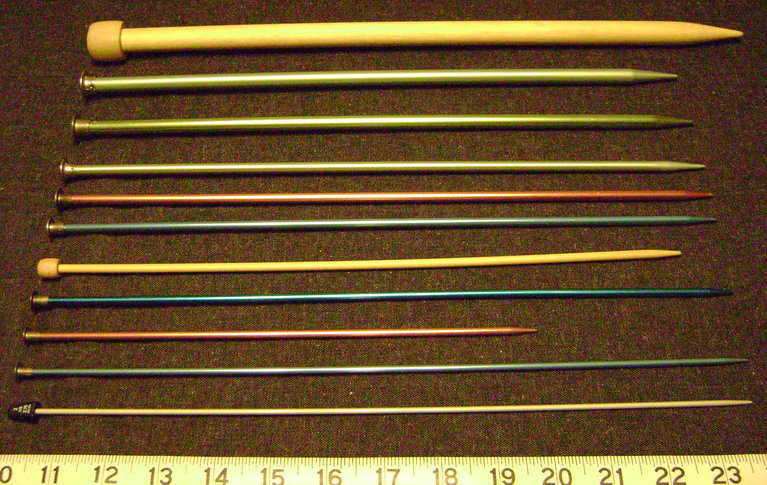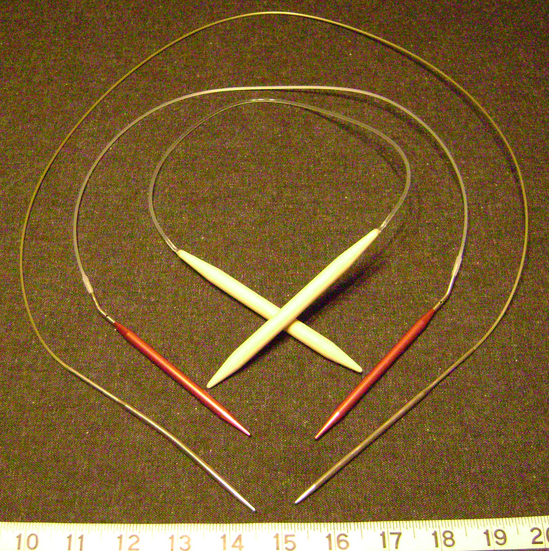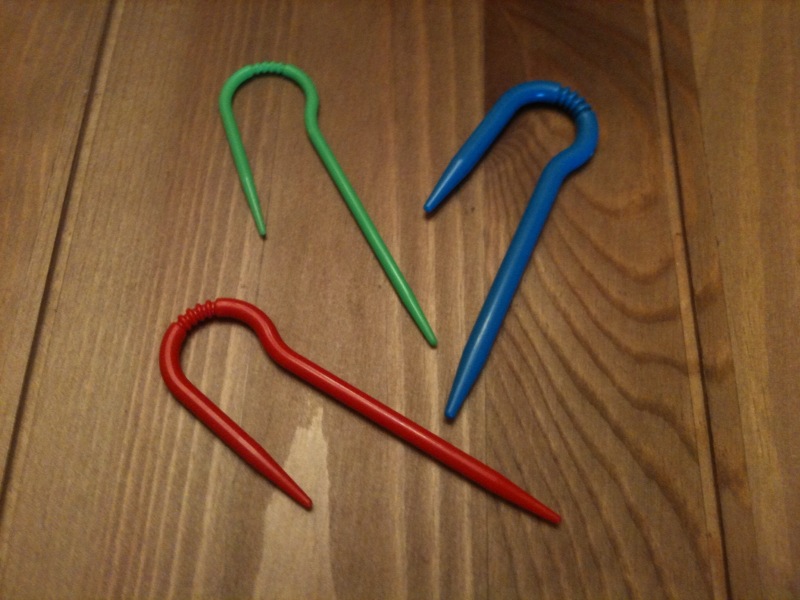For those who are new to knitting, there are few things more important than the basics - knitting needles and yarn. We will discuss knitting needles first. There are many different kinds of needles, and they are used for different things. Once you have chosen your project (a good beginner project is a simple scarf), you will see information for the size of the needle to use and the type of yarn (weight and fiber content.) Needle sizes will range from size 0 to size 50. Size 0 is the thinnest needle and size 50 needles are large as broom handles!

As you can imagine, choosing the right size needle for your project, especially for size sensitive projects such as garments, is of utmost importance. A pattern will indicate the size needle that you should use, but you should always double check by checking the gauge. I will post another blog post on gauge and how to determine if you are using the correct size needles, because it is so important!
So once you have the correct size needles, you will have to determine what material you prefer for your knitting needles. There are three basic materials used for knitting needles: wood, acrylic/plastic, and metal. It is personal preference which you prefer, and I would suggest trying each type. Generally, wood is the least slippery of all the needle types and has the most amount of drag. This is useful if you are working with slippery yarns. Wood needles are often made of bamboo and are flexible and very lightweight.

Acrylic needles are made of plastic, and they are considered a good all-around needle with a slight drag.

Metal needles are quite slippery, which makes them a good needle to use with yarns that are heavier and drag such as cotton. The disadvantage to metal needles is the larger needles tend to be rather heavy, even the metal plated aluminum needles.

One last, yet important, feature you will need to consider when selecting a knitting needle is the type of needle you need for your project. There are single-pointed needles (straight), circular needles, and DPNs (double pointed needles.) Straight needles are very straightforward. They are simply needles which have a single point on one end and a cap on the other end. They can vary in length, but generally are around 9 inches long. They work well when knitting something that is one dimensional, such as a scarf.

Circular needles are the most varied, and most used, knitting needle type. They are created by connecting knitting needle tips with a flexible cord. Circular needles allow you to knit circular items, such as hats. They also provide advantages for knitting large projects, as the bulk of the project will rest in your lap on the flexible cord.
There are fixed circular needles and interchangeable circular needles. Fixed circular needles are needle tips connected permanently to a flexible cable. These tips come in all material types and sizes. The cable on the fixed circular needles can range in size from 9" long to 60" or longer. Interchangeable needles come in sets, and have separate needle tips and cables. The advantage is you purchase one set of needle tips and you can use them on several different cable lengths, depending on your project. The disadvantage is the tips connect to the cable via a "join" and are tightened with a cable key. Occasionally there have been complaints of the tips slipping free from the cable, which can result in loss of your knitting work. This rarely occurs if you tighten the join according to the manufacturer instructions.

The last type of knitting needles are the double-pointed needles. These are straight like the single-pointed needles, but both ends are pointed. These also come in various lengths and needle sizes, and they are frequently used when knitting socks. You can also use them to knit things that are circular.

A last needle type, though not used in the same way the other knitting needles are, is the cable needle. A cable needle is a specialized needle used when making the cable stitch. Cable needles come in various shapes and sizes, as well as different materials and thicknesses.










